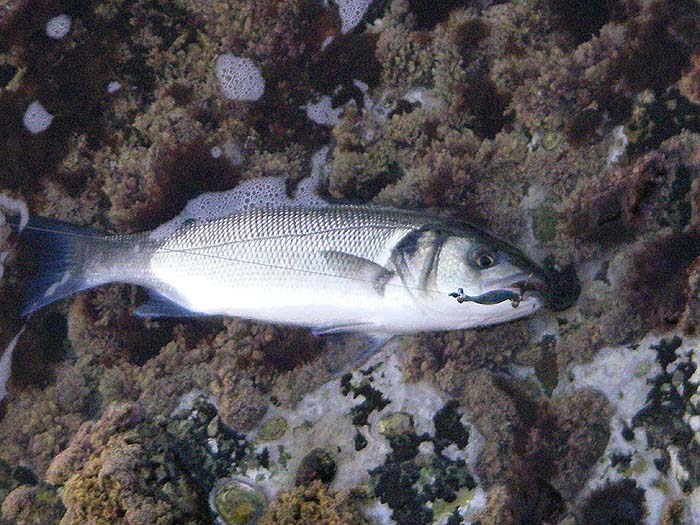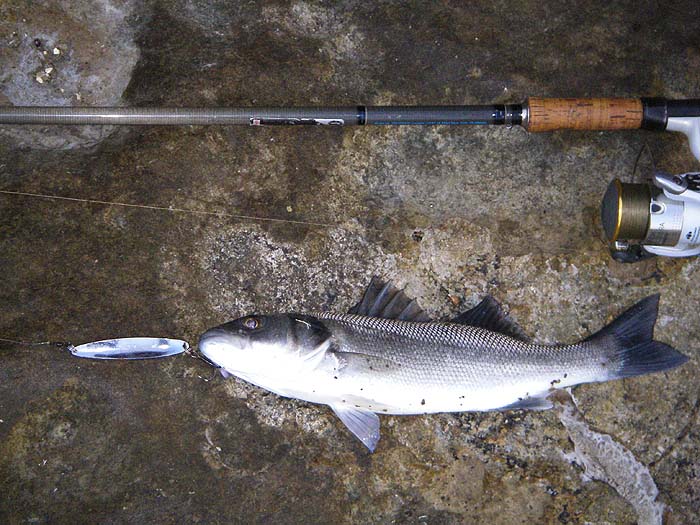

Catch Fish with
Mike Ladle
Information Page
SEA FISHING
For anyone unfamiliar with the site always check the FRESHWATER, SALTWATER and TACK-TICS pages. The Saltwater page now extends back as a record of over several years of (mostly) sea fishing and may be a useful guide as to when to fish. The Freshwater stuff is also up to date now. I keep adding to both. These pages are effectively my diary and the latest will usually be about fishing in the previous day or two. As you see I also add the odd piece from my friends and correspondents if I've not been doing much. The Tactics pages which are chiefly 'how I do it' plus a bit of science are also updated regularly and (I think) worth a read (the earlier ones are mostly tackle and 'how to do it' stuff).
13 September 2007
The other side of the coin.
I'm back from Costa Rica (see the latest Tack-tics page) and this morning I decided to have another go with my livebaiting tactics. I have to say it was hard to drag myself out of bed at quarter-to-five after my eleven hour flight but I managed to get the gear together and I was on the rocks at about half-past-five, just as it began to get light. I took three rods, fly, spinning and livebait, and I started with the fly gear to try and catch a mackerel. It was flat calm and the sky was clear so I was quite hopeful.
My first take turned out to be a decent pollack but it snagged me in the kelp and eventually came unstuck. A couple of minutes later I was into a mackerel which I managed to land. Now fly-caught mackerel are the best baits because they are easy to unhook and so are less traumatised by being caught. This is quite important because a nice, lively mackerel which has not been handled too much will swim, more or less, for ever. On the other hand if the baits mouth or gills have been damaged or if you take too long getting it on the livebait hook it may only keep going for a few minutes.
As it turned out my fish, on a freelined 6/0 circle hook, was still going after about an hour (you'll gather that I didn't have a bite). Anyway, by now I was getting a bit edgy. I knew that there were lots of fish about (I could see the boils and rings on the surface) so I tied the butt of the rod to my heavy tackle bag and laid the rod down to fish for itself (with the clutch loosened right off in case of a take - ever the optimist!). I picked up the spinning rod and had a chuck with the heavy spoon on the end. Wallop - I was into a bass. next cast a mackerel, then next another bass. I swapped over to the fly rod and had a couple of pollack on the fly. Now I checked the livebait gear only to find that the mackerel had 'gone to ground' (I should never have laid it down). After a bit of a tug-of-war it came free but the bait was gone so I packed in and went home.
Now I know I said that livebaits produce bigger bass than lures BUT this is the other side of the coin. If I'd stuck to spinning and livebaiting I'd probably have caught forty fish or even more in my hour-and-a-half. You can't have it both ways.
If you have any comments or questions about fish, methods, tactics or 'what have you.'get in touch with me by sending an E-MAIL to - docladle@hotmail.com
A pollack on the fly.

Mackerel on the spoon.

Bass on the spoon.

and another!
